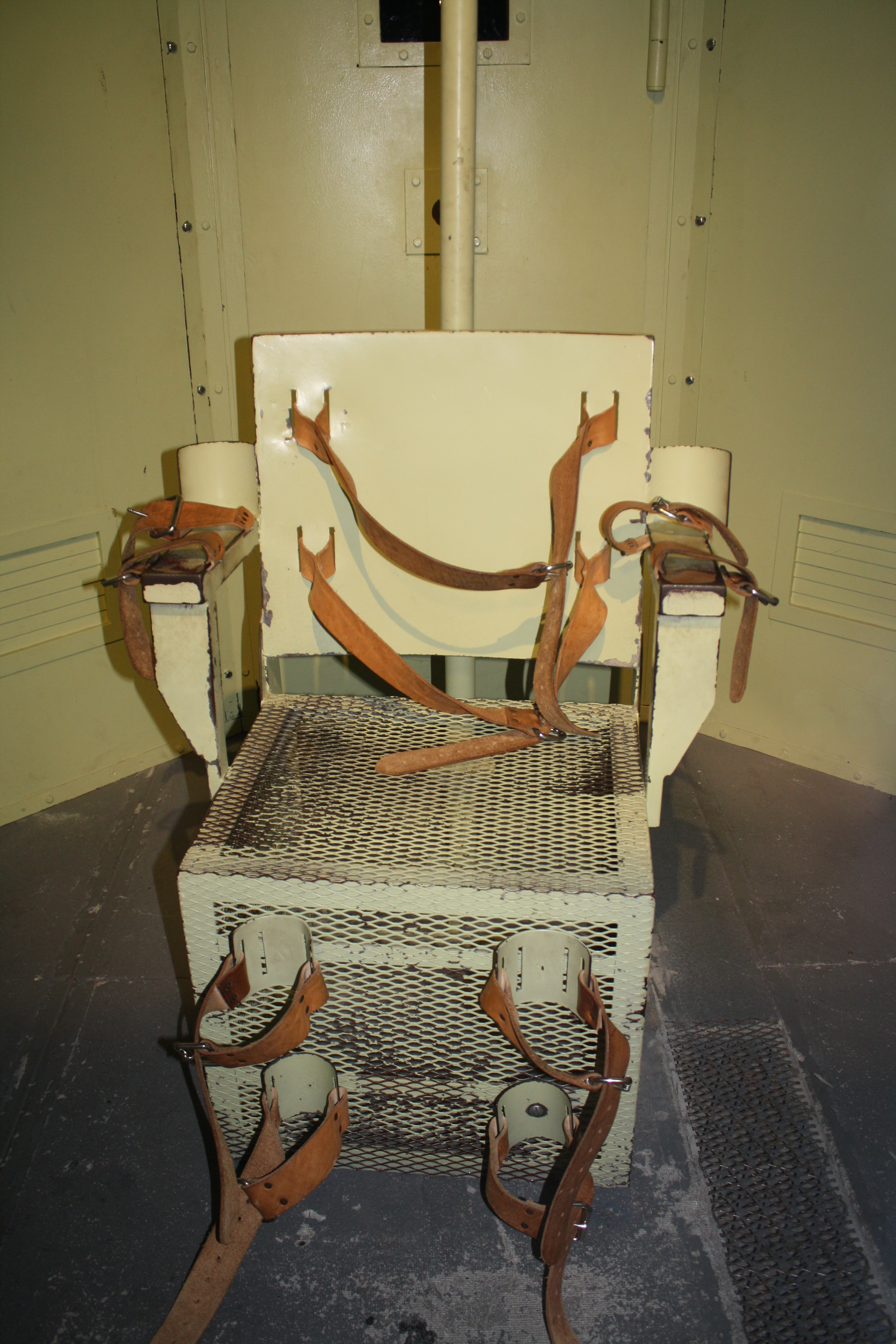

The Gas Chamber
The use of lethal gas as a method of capital punishment was first adopted in 1921 in the state of Nevada as a more humane method of execution over hanging or the electric chair. The first person to be executed by this method was convicted murderer Jon Gee (some sources have him listed as Gee Jon) in 1924. The first attempt to use gas in the execution involved pumping cyanide gas directly into Jon Gee's cell. This failed because the gas leaked from the cell, so a gas chamber was constructed.
Eleven states have used the gas chamber as a method of execution, and, although five states still have it as a secondary method, no state currently uses it as a primary method. Because of the extreme suffering the condemned person experienced, execution by gas was deemed "cruel and unusual" and the last gas chamber execution took place in 1999.
States that used this method of execution would strap the condemned in a chair in a sealed chamber. A pail containing sulfuric acid was placed below the chair, and, when the warden gave the signal, the executioner would pull a switch that would release sodium cyanide into the pail, triggering a chemical reaction creating lethal hydrogen cyanide gas.
The gas chamber was developed in the hope that it would provide a death both quick and painless, however, observers have said such deaths are neither. In some cases the condemned have taken as long as eleven minutes to die and remain conscious for several minutes once the gas has begun to take effect. California's Warden Clifton Duffy, who presided over many gassings at San Quentin Prison, said, "At first there is evidence of extreme horror, pain, and strangling. The eyes pop. The skin turns purple and the victim begins to drool."
The role of the gas chamber as a viable option for capital punishment came back into consideration in July 2013 when the Missouri Attorney General threatened to bring back the gas chamber over lethal injection because of lawsuits regarding the state's lethal injection protocol.